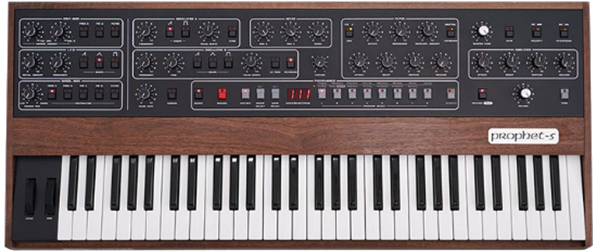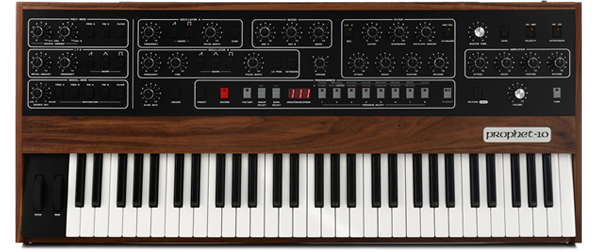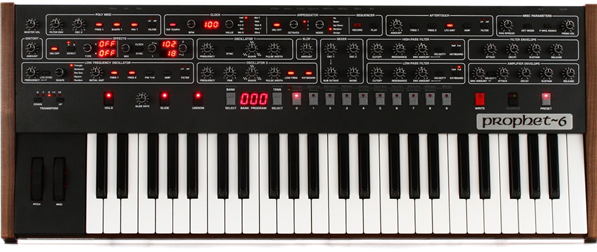Sequential – A legacy in Synthesizers
Sequential started life in 1974 as Sequential Circuits, a San Francisco Bay Area garage start up founded by the now legendary Dave Smith. Dave Smith was already working within the exploding field of electronics right at the heart of Silicon Valley. He struck upon the idea of utilising microprocessors to store and recall sounds which until then, had not been integrated into an existing keyboard. Convinced of its need to exist, he put off development believing that one of the larger keyboard brands would release a version before he could go to production. Thankfully, he decided to go ahead with production anyway with the prototype of the Prophet 5, making its debut appearance at the 1978 NAMM show to great acclaim and a mass of orders.

Sequential Circuits would go on to shape the sounds of more than one generation with the Prophet 5, and a multitude of music genres including progressive rock and notable artists from the New Romantics movement in the 1980s.
Read more about the Prophet-5 here >The Prophet 10 introduced the bi-timbral stack and split modes (essentially allowing you to layer two Prophet 5’s) alongside the ability to play 10 notes at once, making it popular with movie composers including John carpenter (Halloween), Brad Friedel (Terminator) and many more. The list of musicians and songs where a Sequential Circuit synthesiser has been used is breath-taking!

In 1982, Dave smith was pivotal in the creation of MIDI (Musical Instrument Digital Interface), working to bring together some of the biggest brands in the world to set a standard in connecting and interfacing devices. During the ‘80s Sequential Circuits would have mixed success with a variety of standard and desktop synthesis.
Often, being a class innovator can put you too far ahead of an unprepared market. Dave Smith had attempted to transition to computer audio and a larger consumer market but the appetite just wasn’t there. This, alongside competition from larger brands able to manufacture higher quantities of cost-effective keyboards, made the market tough for smaller manufacturers, resulting in Sequential Circuits being sold to Yamaha in 1987. Yamaha ceased to release products under the Sequential name, ultimately shutting down the brand in 1989. Dave Smith and much of his team moved their creative focus to Korg, where they continued to develop instruments, most notably the Korg Wavestation.
With a hiatus from hardware synths, Dave Smith spent much of the ‘90s developing software at Seer Systems, before finally moving back to hardware in 2002 under the name Dave Smith Instruments. In January of 2015 Dave was given the Sequential Circuits name back from Yamaha - a gesture of good will after some haranguing from the head of Roland. Dave would go onto to release the Prophet 6, and in conjunction with Tom Oberheim the much-loved OB-6.

The Prophet 6 was made with the look and vibe of the prophet 5, but with everything 21st century technology could offer, such as effects, an arpeggiator and a step sequencer. In 2018 on the 40th anniversary of the Prophet 5, Dave shortened the Sequential Circuits name to the instantly recognisable Sequential.
The Sequential brand is so intrinsically linked to its talismanic figurehead (Dave Smith) that the two are often thought as the same thing. A pioneer of sound, whose engineering and imagination gave us the soundtracks to the ‘70s, ‘80s, ‘90s and beyond.
Sequential was acquired by Focusrite in 2021, helping to bring the Sequential sound to a new, younger audience. Under the stewardship of Focusrite, Sequential remains the same, but with the potential to work with another innovative brand in Novation. With such a storied history, the future looks better than ever.